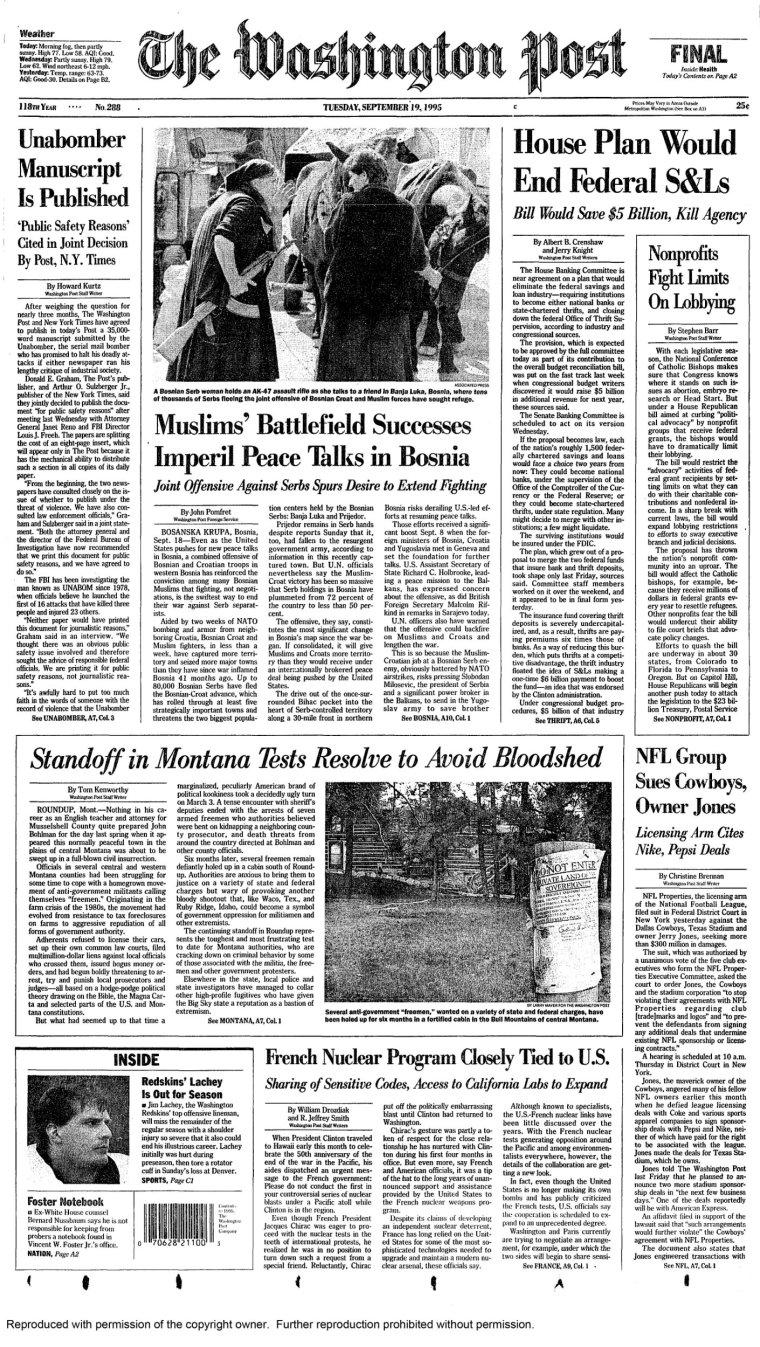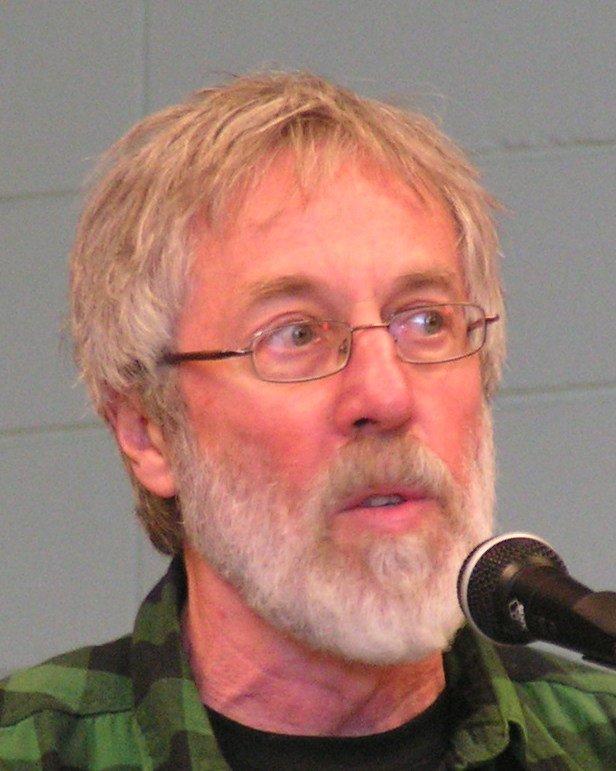Kieron Monks
The Unabomber fan club: How killer Ted Kaczynski became an icon for new generation of radicals
The coalition of admirers includes libertarians, left-wing environmentalists, and Greek neo-fascist party Golden Dawn

The announcement of the death of Ted Kaczynskitwo months ago on 10 June triggered an outpouring of heartfelt tributes.
“Uncle Ted is gone,” lamented one member of an online forum devoted to the man dubbed the Unabomber, who killed three and injured 23 with letter bombs until his arrest in 1996 after a 17-year manhunt.
“We did lose a great man,” said another fan in another Kaczynski group. “But he will live on through us… The man died, not the idea!”
Tributes cut across national borders and political divides. Elon Musk, owner of the world’s highest-profile tech company, paid his respects to a man who dedicated his life to a war on technology.
The movement behind the Unabomber is gathering strength. Communities of thousands across Facebook, Reddit, and Discord pore over his essays. Podcasts and TV series draw in new audiences. Celebrities struggle to contain their admiration.
Kaczynski remains a powerful influence, researchers believe, and in some cases a dangerous one.
Followers told i that the Unabomber transformed their lives. “I was lost when I first encountered him,” said Khan, a 24-year-old Istanbul resident who had felt disillusioned by what he saw as the “fake reality” constructed by social media.
Khan now identifies as an anarcho-primitivist, an ideology based on the idea that humanity took a wrong turn with industrial civilisation and should return to a simpler, self-reliant way of life. For adherents, the Unabomber’s 35,000-word manifesto, Industrial Society and its Future, is a foundational text.

The activist now follows an agenda inspired by the Unabomber’s teachings, which includes promoting afforestation, boycotting corporations, growing rather than buying food, and “most importantly, spreading his ideas and the Unabomber manifesto.”
Khan has little interest in Kaczynski’s crimes. “It doesn’t matter if you use violence,” he said. “Just this week more people died for stupid reasons. It is nothing for a great cause.”
The Unabomber has millions of followers across the world, he says, including “pretty radical” elements willing to use violence in service of their goals.
But there is little consensus among acolytes, who span the political spectrum.
Libertarians admire Kaczynski’s advocacy for individual freedoms. Right-wing activists appreciate his critique of the left, which he saw as weighed down by “feelings of inferiority.” Left-wing environmentalists share his commitment to living simply with nature.
The Unabomber’s “political ambivalence” allowed him to be adopted by “radicals of different stripes”, says Sean Fleming, The Unabomber and the origins of anti-tech radicalism.
While Kaczynski remained laser-focussed on technology, admirers claimed him for various ideologies.
“You have green anarchists and radical environmentalists,” says Dr Fleming. “Then there is the far right, nonviolent anti-tech radicals, and violent anti-tech radicals.
“It’s difficult to find someone who accepts all of his ideas, but it’s easy to find a lot of people who accept some of his ideas.”


The peaceful end of the anti-tech radical spectrum includes groups such as the Anti-Tech Collective, co-founded by philosophy professor and longtime Kaczynski confidante, Dr David Skrbina.
Violent groups such as the Mexican collective Individuals Tending to the World followed the Unabomber’s example more literally, sending mail bombs to scientists.
Kaczynski’s far-right following has become most prominent in recent years, says Dr Fleming. Greek neo-fascist party Golden Dawn published a translation of his manifesto. Anders Breivik plagiarised passages from it before murdering 77 at a youth Labour camp in Norway.
A libertarian member of a Unabomber forum, speaking anoynmously, divides his following by degree of commitment.
“Moderates… sympathise or agree with some of Ted’s ideas but disagree with burning the whole thing down,” he told i. “Radicals” crave a “return to hunter gatherer society”.
Theo Slade, a contributor to the Ted K archive – a collection of writing by and about the Unabomber – believes that many alienated young men identify with a “kindred broken spirit”.
Kaczynski, a highly intelligent but awkward character, possibly on the autism spectrum, embraced isolation by withdrawing from society to live in the woods of Montana.
“I think his eccentricities and his weirdness are compelling to people who are struggling,” says Mr Slade. He often talks to Men’s Rights Activists (MRAs) through the archive who seem troubled and alienated.
The Unabomber offers a vision of freedom, Mr Slade suggests. In one case a member of the community followed his icon’s lead by going to live in a hut in a national park.
In other cases, Kaczynski’s influence was not harmless. Greek ex-soldier Nikolaos Karvounakis is now serving a prison sentence for planting a bomb in Edinburgh after being radicalised in Unabomber forums.
Kaczynski cultivated a following in prison with an eye on his legacy and maintaining the anti-technology cause, exchanging letters with many admirers. But his fans were often a disappointment, and he continued to disparage leftists and eco-fascists in his writing.

He was an object of fascination from the start, says John Zerzan, an anarcho-primitivist author who befriended the Unabomber and visited him in prison.
“There was a huge amount of interest in him and huge amounts of correspondence from various kinds of people,” he told i. “There was a lot of support right away, in fact we had a benefit for him.” Support ranged from “anarchists and bunker types” to “very straight people”.
Despite a falling out that ended Mr Zerzan’s visits to the Colorado Supermax, he remains full of his admiration for the Unabomber’s work and sees it as more vital than ever.
“I continue to recommend Industrial Society and its Future, I think it really holds up and points the way to grasping what is going,” he said, distilling Kaczynski’s message to single point: “The more technology in society there is, the less meaning and freedom in the individual’s life.”
That message has become even more prescient in this tech-centric era, the author argues, as smartphones reduce people to “zombies” and artificial intelligence threatens to render humanity redundant.
Mr Zerzan is encouraged by the growth of groups such as New York’s Luddite Club, which encourages people to ditch their phones, suggesting a new era of tech-scepticism could be arriving that his old friend would have approved of.
The Unabomber’s following has waxed and waned, says Dr Fleming, peaking around the release of his manifesto in 1995 and arrest the year later, and then again when his collection of essays Technological Slavery was released in 2010.
Kaczynski is enjoying another surge today, the author believes, having anticipated many of the great anxieties of this era.
“I think this is only the beginning of the Unabomber revival,” says Dr Fleming. “With increasing concerns about automation, artificial intelligence, nanotechnology, and climate change, Kaczynski and his following are only going to grow.”
